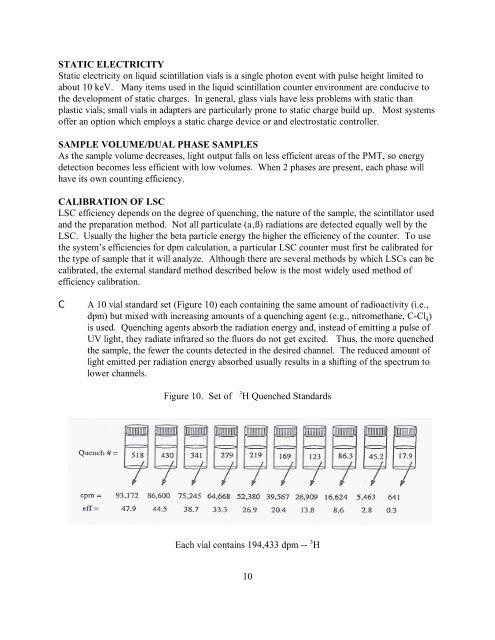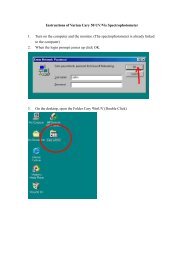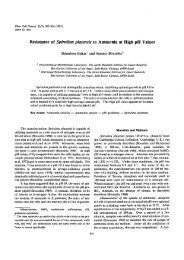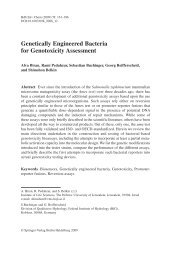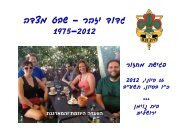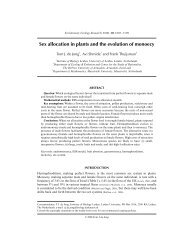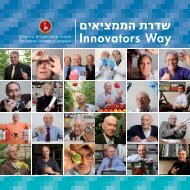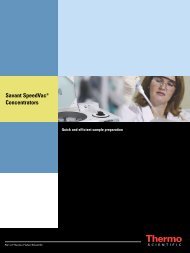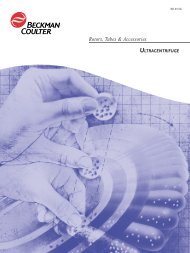LIQUID SCINTILLATION COUNTING
LIQUID SCINTILLATION COUNTING
LIQUID SCINTILLATION COUNTING
Create successful ePaper yourself
Turn your PDF publications into a flip-book with our unique Google optimized e-Paper software.
STATIC ELECTRICITY<br />
Static electricity on liquid scintillation vials is a single photon event with pulse height limited to<br />
about 10 keV. Many items used in the liquid scintillation counter environment are conducive to<br />
the development of static charges. In general, glass vials have less problems with static than<br />
plastic vials; small vials in adapters are particularly prone to static charge build up. Most systems<br />
offer an option which employs a static charge device or and electrostatic controller.<br />
SAMPLE VOLUME/DUAL PHASE SAMPLES<br />
As the sample volume decreases, light output falls on less efficient areas of the PMT, so energy<br />
detection becomes less efficient with low volumes. When 2 phases are present, each phase will<br />
have its own counting efficiency.<br />
CALIBRATION OF LSC<br />
LSC efficiency depends on the degree of quenching, the nature of the sample, the scintillator used<br />
and the preparation method. Not all particulate (a,ß) radiations are detected equally well by the<br />
LSC. Usually the higher the beta particle energy the higher the efficiency of the counter. To use<br />
the system’s efficiencies for dpm calculation, a particular LSC counter must first be calibrated for<br />
the type of sample that it will analyze. Although there are several methods by which LSCs can be<br />
calibrated, the external standard method described below is the most widely used method of<br />
efficiency calibration.<br />
C<br />
A 10 vial standard set (Figure 10) each containing the same amount of radioactivity (i.e.,<br />
dpm) but mixed with increasing amounts of a quenching agent (e.g., nitromethane, C-Cl 4 )<br />
is used. Quenching agents absorb the radiation energy and, instead of emitting a pulse of<br />
UV light, they radiate infrared so the fluors do not get excited. Thus, the more quenched<br />
the sample, the fewer the counts detected in the desired channel. The reduced amount of<br />
light emitted per radiation energy absorbed usually results in a shifting of the spectrum to<br />
lower channels.<br />
Figure 10. Set of 3 H Quenched Standards<br />
Each vial contains 194,433 dpm -- 3 H<br />
10


